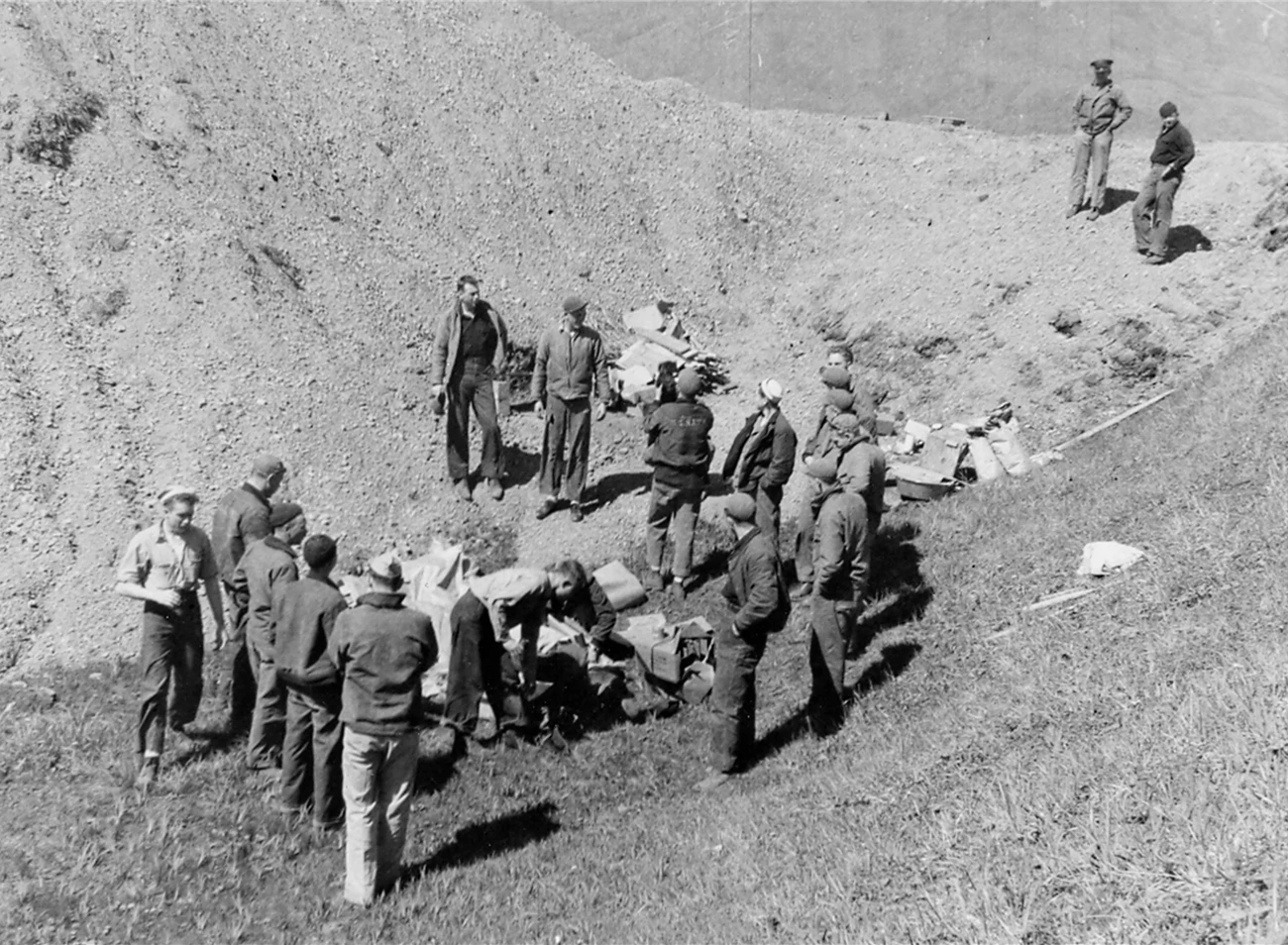Last updated: July 5, 2021
Article
Aerographers
"Aerographers' work included measuring, transmitting, and recording six types of weather observations. These weather observations included hourly, synoptic, ship report, pilot balloons, radiosonde, and pilot reports. Aerographers worked with a variety of instruments to gather necessary information."
by Paul E. Carrigan, Aerographer's Mate, 1942-1943

Courtesy Walter Andersen, Aerographer’s Mate, 2nd Class, US Navy, Circa 1943-1945.

Courtesy Walter Andersen, Aerographer’s Mate, 2nd Class, US Navy, Circa 1943-1945.
Weather and Warfare
Battles have been won or lost due to various weather conditions. Towards the end of World War I, the US Navy expanded their focus on weather and its impact on warfare. In 1917, the director of Harvard University’s meteorological observatory, Alexander G. McAdie, agreed to teach a group of Navy candidates to make accurate weather observations. At that time, the Secretary of the Navy, Franklin D. Roosevelt, supported developing the Naval Aerographic Organization, which later because the Naval Weather Service.
In 1924, the Navy established the rating of “Aerographer” and by 1942, men and women (Women Accepted for Voluntary Emergency Services, WAVES) were becoming “Aerographer’s Mates,” to help ships and planes navigate weather safely during World War II. Aerographers were especially important in the Aleutian Islands, where the weather was notoriously bad.
Here are a few recollections from men who served as Aerographer’s Mates during World War II in the Aleutian Islands:

Courtesy Walter Andersen, Aerographer’s Mate, 2nd Class, US Navy, Circa 1943-1945
"Then another time in a snow storm ... the radioman on duty in the middle of the night, he makes a ... encodes a message and he calls and he says, 'Hey, I've got an urgent message coming in we better decode it.' So the guy in charge, he says ... 'Enemy attack or abandon your base immediately, enemy attack imminent.' And it is snowing like you can't believe. We got all gear in our backpacks and we started out the door and we hadn't gone more than 25 yards and this guy started to laugh. He thought it was pretty funny."

Right: A 90’ radio range antenna tuning house.
Left: Courtesy Ralph Carrigan, brother of Paul E. Carrigan, Aerographer’s Mate 2nd Class, US Navy, Circa 1942-1943.
Right: Courtesy of Mark S. Cramer, MD, FAAFP, San Diego, CA, from the collection of Marco James Cramer, Ph. D., Lt., US Army Air Corps

Courtesy Walter Andersen, Aerographer’s Mate, 2nd Class, US Navy, Circa 1943-1945.
"But anyhow, that was a big day. We had ... they had beer - truckloads of beer - so we went back in a little gully and we had a picnic back there... I was on Attu. The officers got beer for us. We had really good officers, too."

Courtesy Ralph Carrigan, brother of Paul E. Carrigan, Aerographer’s Mate 2nd Class, US Navy, Circa 1942-1943.
On June 7, 1942, the Japanese invaded the island of Kiska. The men of the Kiska Aerological Unit (pictured below) were the only people on the island during the time of the invasion. The men of this unit fled to the hills, but most of them were captured within a week. Only Senior Petty Officer Charles House managed to remain at large for 50 days.
Prior to the invasion, Nulla and L. Yagnoneli had left Kiska for Dutch Harbor.
"By June 6, 1942, we figured the Japanese were well past Kiska ... Just after 0200 hours on June 7, 1942, Winfrey AG3 sleeping in the bunk above me shouted, 'Attack, attack!' I told him to go back to bed, it is not time to get up, and that he was having a bad dream. Wimpy then turned on the lights and showed me the bullet hole in his leg. About that time I observed window glass in our bunk room being broken by bullets ... Turner turned the heating stove up full, and I stuffed all the communication ciphers into the hot stove ... As I ran from the building the first light permitted the observation of many Japanese landing craft moving up the inner harbor with machine guns blasting from their bows."

Top right: Lieutenant Marco Cramer’s work office.
Bottom right: The inside of Marco Cramer and his crewmembers work room. Shown in the photo is a safe, files, radio, teletype paper under the radio, teletype, desks, and stove.
Photos courtesy of Mark S. Cramer, MD, FAAFP, San Diego, CA, from the collection of Marco James Cramer, Ph. D., Lt., US Army Air Corps (Air Force)
"Fog, rain, sleet and snow accompanied by violent winds can occur during any season. It is for this reason that, in weather circles, the Aleutians are generally considered to have the worst weather in the world. It is granted that this fact plus their remoteness might make the Aleutians an intriguing place to visit briefly but it was a cheerless, unpleasant place to live and an exceedingly difficult place to wage war. ...
In spite of being bundled up in heavy, winter, fleece-lined, leather flight pants, jackets, boots and gloves, the aircrews returned half frozen from these reconnaissance patrols. This was especially true for the two blister gunners. Insidious, creeping cold began on one's extremities and slowly penetrated to the very bone marrow. It was not unusual to endure the last half of a patrol with uncontrollable shakes and chattering teeth."
by Paul E. Carrigan, Aerographer's Mate, 1942-1943
Today, Aerographer Mates continue to train in meteorology and oceanography and monitor weather characteristics. Planes, ships, and people on shore are then able to make tactical decisions about how to proceed.
